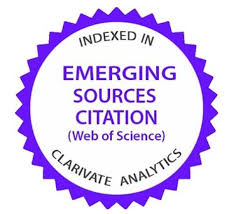The Virtual Reality of Imprisonment
The Impact of Social Media on Prisoner Agency and Prison Structure in Russian prisons
DOI:
https://doi.org/10.35295/osls.iisl/0000-0000-0000-0933Palabras clave:
Rusia, reclusos, agencia, redes sociales, estructura, ausenciaResumen
Con Rusia como estudio de caso, este artículo informa acerca de los hallazgos de nuevas investigaciones sobre el uso ilícito de Internet por parte de los reclusos, y de los efectos sobre la agencia de los reclusos y sobre la estructura de la prisión. Nuestro principal hallazgo es que las prisiones de Rusia son el punto de encuentro de dos procesos: primero, la vida en prisión se desinstitucionaliza, de modo que la prisión, en sentido discursivo, ya no está vinculada a una edificación; segundo, la existencia carcelaria se reterritorializa de forma reflexiva, a través de la traslación de la agencia del prisionero a un tercer espacio. El artículo presenta un marco conceptual nuevo de prisioneros en ausencia, que revela que la vida carcelaria de Rusia es culturalmente contingente y políticamente resiliente. La interrelación entre desinstitucionalización y reterritorialización ha producido un nuevo imaginario - un motivo carcelario para el siglo XXI - en forma de mundo virtual.
Descargas
Metrics
Estadísticas globales ℹ️
|
643
Visualizaciones
|
842
Descargas
|
|
1485
Total
|
|
Citas
Baberowski, J., et al., eds., 2015. Kritika: Explorations in Russian and Eurasian History [online], 16 (3, Special issue: The Soviet Gulag: New Research and New Interpretations). Available from: https://muse.jhu.edu/issue/32389 [Accessed 24 January 2018].
Barnes, S., 2011. Death and Redemption: The Gulag and the Shaping of Soviet Society. Princeton University Press. DOI: https://doi.org/10.23943/princeton/9780691151120.001.0001
Bosworth, M., 1999. Engendering Resistance: Agency and Power in Women’s Prisons. London: Routledge.
Bosworth, M., 2016. Border Criminologies: How migration is changing criminal justice. In: M. Bosworth, C. Hoyle and L. Zedner, eds., Changing Contours of Criminal Justice. Oxford University Press.
Bowring, B., 2013. Law, Rights and Ideology in Russia: Landmarks in the destiny of a great power. London: Routledge. DOI: https://doi.org/10.4324/9780203490211
Boyd, D., and Crawford, K., 2012. Critical questions for big data. Information, Communication & Society [online], 15 (5). Available from: http://www.tandfonline.com/doi/abs/10.1080/1369118X.2012.678878 [Accessed 24 January 2018], pp. 662-679. DOI: https://doi.org/10.1080/1369118X.2012.678878
Burke, I., 2013. Russia scrambles to improve detainee rights record under ECHR guidance. Rapsi. Russian Legal Information Agency [online], 9 January. Available from: http://www.rapsinews.com/judicial_analyst/20130109/265853623.html [Accessed 24 January 2018].
Calavitta, K., and Jenness, V., 2015. Appealing to Justice: Prisoner Grievances, Rights and Carceral Logic. Berkeley, CA: University of California Press.
Callinicos, A., 2009. Making History: Agency, Structure, and Change in Social Theory: Historical Materialism. Chicago, IL / New York: Haymarket books.
Carrington, K., 2015. Feminism and Global Justice. London: Routledge. DOI: https://doi.org/10.4324/9781315748368
Carrington, K., et al., eds., 2012. Crime, Justice and Social Democracy: International Perspectives. Basingstoke: Palgrave Macmillan.
Council of Europe, 1950. European Convention on Human Rights, as amended by Protocols Nos. 11 and 11, supplemented by Protocols Nos. 1, 4, 6,7, 12 and 13 [online]. Rome, 4 November. Available from: http://www.echr.coe.int/Documents/Convention_ENG.pdf [Accessed 24 January 2018].
Council of Europe, 2004. Protocol No. 14 to the Convention for the Protection of Human Rights and Fundamental Freedoms, amending the control system of the Convention. CETS No. 194 [online]. Strasbourg, 13 May. Available from: https://www.coe.int/en/web/conventions/full-list/-/conventions/treaty/194 [Accessed 1 February 2018].
Coyle, A., 2009. A Human Rights Approach to Prison Management. Handbook for Prison Staff. London: International Centre for Prison Studies.
Crawford, A., and Hutchinson, S., 2016. Mapping the Contours of ‘Everyday Security’: Time, Space and Emotion. The British Journal of Criminology [online], 56 (6), pp. 1184-1202. Available from: https://doi.org/10.1093/bjc/azv121 [Accessed 24 January 2018]. DOI: https://doi.org/10.1093/bjc/azv121
Deuze, M., 2011. Media Life. Media, Culture and Society, 33 (1), pp. 137-148. DOI: https://doi.org/10.1177/0163443710386518
Drake, D., Earle, R., and Sloan, J., 2015. The Palgrave Handbook of Prison Ethnography. Basingstoke: Palgrave Macmillan. DOI: https://doi.org/10.1057/9781137403889
Edkins, J., 2011. Missing: Persons and Politics. Ithaca, NY: Cornell University Press. DOI: https://doi.org/10.7591/cornell/9780801450297.001.0001
European Court of Human Rights, 2012. Russia required to take urgent action regarding inhuman and degrading conditions of pre-trial detention [online]. Press release issued by the Registrar of the Court. 10 January. Available from: https://hudoc.echr.coe.int/app/conversion/pdf?library=ECHR&id=003-3800862-4354469&filename=Chamber%20judgment%20Ananyev%20and%20Others%20v.%20Russia%2010.01.12.pdf [Accessed 2 February 2018].
Federal Penitentiary Service of Russia, 2013. Director Gennady Kornienko visit Norway and Finland [online]. Press release, 11 June. Available from: http://www.fsin.su/eng/news/index.php?ELEMENT_ID=96694 [Accessed 23 January 2018].
Fletcher, R., 2006. The impact of culture on website content, design and strtcure. An International and multicultural perspective. Journal of Communication Management, 10 (3), pp. 259-273. DOI: https://doi.org/10.1108/13632540610681158
Fuchs, C., 2017. Social Media: A Critical Introduction. 2nd Edition. Thousand Oaks, CA: Sage.
Gibson, M., 2016. YouTube and Bereavement Vlogging: Emotional exchange between strangers. Journal of Sociology [online], 52 (4), 631–645. Available from: http://journals.sagepub.com/doi/abs/10.1177/1440783315573613?journalCode=josb [Accessed 24 January 2018]. DOI: https://doi.org/10.1177/1440783315573613
Ginzburg, E., 1967. Journey into the Whirlwind. New York: Harcourt, Brace & World.
Gordon, A., 2011. Some Thoughts in Haunting and Futurity. Borderland, 10 (2), pp 1-21.
Grossman, V., 1965/2009. Everything Flows. Trans.: Robert Chandler, Elizabeth Chandler, and Anna Aslanyan. New York: NYRB Books.
Hannah-Moffat, K., 2001. Punishment in disguise: penal governance and federal imprisonment of women in Canada. Toronto University Press. DOI: https://doi.org/10.3138/9781442678903
Hannah-Moffat, K., 2014. Moving targets: Reputational risk, rights and accountability in punishment [online]. Slides from the 8th Annual Lecture of the Scottish Centre for Crime and Justice Research. The University of Glasgow, 19 May. Available from: http://www.sccjr.ac.uk/publications/moving-targets-reputational-risk-rights-and-accountability-in-punishment [Accessed 1 February 2018].
Hines, C., 2015. Ethnography for the Internet: Embedded, Embodied, Everyday. London: Bloomsbury.
Hjorth, L. and Lim, S.S., 2012. Mobile intimacy in an age of affective mobile media. Feminist Media Studies [online], 12 (4), 477-484. Available from: https://doi.org/10.1080/14680777.2012.741860 [Accessed 24 January 2018]. DOI: https://doi.org/10.1080/14680777.2012.741860
Holquist, P., 2003. State Violence as Technique: The Logic of Violence in Soviet Totalitarianism. In: A. Weiner, ed., Landscaping the Human Garden: Twentieth Century Population Management in a Comparative Framework. Redwood City, CA: Stanford University Press. DOI: https://doi.org/10.1515/9781503620407-005
Jenkins, H., 2009. Confronting the Challenges of Participatory Culture. Cambridge, MA: The MIT Press, coll. MacArthur Foundation Reports on Digital Media and Learning.
Jewkes, Y., 2015. Fear Suffused Hell Holes: The Architecture of Extreme Punishment. In: K. Reiter and A. Koelig, eds., Extreme Punishment Comparative Studies in Detention, Incarceration and Solitary Confinement. London: Palgrave Macmillan. DOI: https://doi.org/10.1057/9781137441157_2
Khlevniuk, O., 2015. The Gulag and the Non-Gulag as One Interrelated Whole. Trans.: Simon Belokowsky. Kritika: Explorations in Russian and Eurasian History [online], 16 (3, Special Issue: The Soviet Gulag: New Research and New Interpretations), 479-498. Available from: https://muse.jhu.edu/article/591088 [Accessed 24 January 2018]. DOI: https://doi.org/10.1353/kri.2015.0043
Knight, V., 2016. Remote Control: Television in Prison. London: Palgrave Macmillan.
Kozinets, R., 2015. Netnography: Doing Ethnographic Research Online. Thousand Oaks, CA: Sage.
McAuley, M., 2016. Human Rights in Russia: Citizens and the State from Perestroika to Putin. London: I.B. Tauris. DOI: https://doi.org/10.5040/9780755620111
Moran, D., and Disney, T., 2017. ‘It’s a horrible, horrible feeling’: ghosting and the layered geographies of absent–presence in the prison visiting room. Social & Cultural Geography [online]. First published 1 September. Available from: https://doi.org/10.1080/14649365.2017.1373303 [Accessed 24 January 2018]. DOI: https://doi.org/10.1080/14649365.2017.1373303
Moran, D., 2015. Carceral Geography: Spaces and Practices of Incarceration. London: Routledge. DOI: https://doi.org/10.4324/9781315570853
Pallot, J., 2013. Penitentiary Systems in the Era of Internet Services in Russia. Laboratorium, Russian Review of Social Research [online], 3. Available from: http://www.soclabo.org/index.php/laboratorium/article/view/356/946 [Accessed 23 January 2018].
Paperno, I., 2009. Stories of the Soviet Experience: Memoirs, Diaries, Dreams. Ithaca, NY: Cornell University Press. DOI: https://doi.org/10.7591/9780801459115
Parr, H., and Fyfe, N., 2013. Missing geographies. Progress in Human Geography [online], pp. 1–24. Available from: http://eprints.gla.ac.uk/73806/1/73806.pdf [Accessed 24 January 2018].
Pauwels, L., 2011. Researching Websites as Social and Cultural Expressions: Methodological Predicaments and a Multimodal Model for Analysis. In: E. Margolis and L. Pauwels, eds. The Sage Handbook of Virtual Research Methods. Thousand Oaks, CA: Sage. DOI: https://doi.org/10.4135/9781446268278.n29
Payne, M., 1995. Understanding ‘going missing’: Issues for social work and social services. British Journal of Social Work, 25 (3), 333–348.
Piacentini, L., 2004. Surviving Russian Prisons: Punishment, Economy and Politics in Transition. Cullompton: Willan.
Piacentini, L., and Katz, E., 2017. Carceral framing of human rights in Russian prisons. Punishment and Society, 19 (2), 221-239. DOI: https://doi.org/10.1177/1462474516665609
Piacentini, L., and Slade, G., 2015. Architecture and Attachment: Carceral collectivism and the problem of prison reform in Russia and Georgia. Theoretical Criminology [online], 19 (2), 179-197. Available from: http://dx.doi.org/10.1177/1362480615571791 [Accessed 23 January 2018]. DOI: https://doi.org/10.1177/1362480615571791
Pittendrigh, N., 2015. Making Visible Invisible Suffering: Non-deliberative Agency and the Bodily Rhetoric of Tamms Supermax Prisoners. In: K. Reiter and A. Koelig, eds., Extreme Punishment Comparative Studies in Detention, Incarceration and Solitary Confinement. London: Palgrave Macmillan. DOI: https://doi.org/10.1057/9781137441157_9
Pomerantsev, P., 2014. Nothing is True and Everything is Possible: The Surreal Heart of the New Russia. New York: PublicAffairs.
Ratushinskaya, I., 1988. Grey Is the Colour of Hope. Trans.: Alyona Kojevnikov. London: Hodder and Stoughton.
Rhodes, L., 2004. Total Confinement: Madness and Reason in the Maximum Security Prison. Berkeley, CA: University of California Press.
Rosen, C., 2012. Electronic Intimacy in the Age of Connection. The Wilson Quarterly [online], spring, pp. 48–51. Available from: https://www.wilsonquarterly.com/quarterly/spring-2012-the-age-of-connection/electronic-intimacy/ [Accessed 24 January 2018].
Rubin, A., 2016. Resistance as Agency? Incorporating Structural Determinants of Prisoner Behaviour. The British Journal of Criminology, 53 (3), 644-663. DOI: https://doi.org/10.1093/bjc/azw003
Soja, E.W., 1998. Thirdspace: Journeys to Los Angeles and Other Real and Imagined Places. Cambridge, MA: Blackwell. DOI: https://doi.org/10.1177/030981689806400112
Solzhenitsyn, A., 1973. The Gulag Archipelago. Trans.: Thomas P. Whitney. London: Collins and Harvill.
Suler, J., 2004. The online disinhibition effect. Cyberpsychology and Behavior, 7 (3), 321-326. DOI: https://doi.org/10.1089/1094931041291295
The Moscow Times, 2015. Enterprising Accomplices Launch Drone Carrying Cell Phones into Russian prison. The Moscow Times [online], 20 July. Available from: https://themoscowtimes.com/news/enterprising-accomplices-launch-drone-carrying-cell-phones-into-russian-prison-48387 [Accessed 23 January 2018].
van Riel, M., 2015. More Than a Decade after Kalashnikov, Russian Prisons Still Abysmal. Open Society Foundations [online], 24 June. Available from: https://www.opensocietyfoundations.org/voices/more-decade-after-kalashnikov-russian-prisons-still-abysmal [Accessed 23 January 2018].
Descargas
Publicado
Cómo citar
Número
Sección
Licencia
Derechos de autor 2018 Laura Piacentini, Elena Katz

Esta obra está bajo una licencia internacional Creative Commons Atribución-NoComercial-SinDerivadas 4.0.
Los autores conservan el copyright de sus trabajos, que se publicarán en OSLS bajo una licencia Creative Commons Reconocimiento NoComercial SinObraDerivada. Puede consultar más detalles en: http://es.creativecommons.org/licencia/. Si no está de acuerdo con esta licencia, por favor, póngase en contacto con nosotros.
El autor concede los permisos necesarios para difundir la información bibliográfica del artículo, incluyendo el resumen, y autorizar a otros, incluyendo las bases de datos bibliográficas, de índices y servicios de alerta de contenidos, a copiar y comunicar esta información.
Para más información sobre los permisos para distribuir su artículo en cada fase de la producción, por favor, lea nuestra Política de Autoarchivo y Divulgación (en inglés).
Las condiciones de copyright con el nombre de autores y co-autores, y la licencia Creative Commons se mostrarán en el artículo. Estas condiciones se deben aceptar como parte del proceso de envío de un artículo a la revista. Por favor, asegúrese de que todos los co-autores se mencionan correctamente, y que entienden y aceptan estos términos.





















